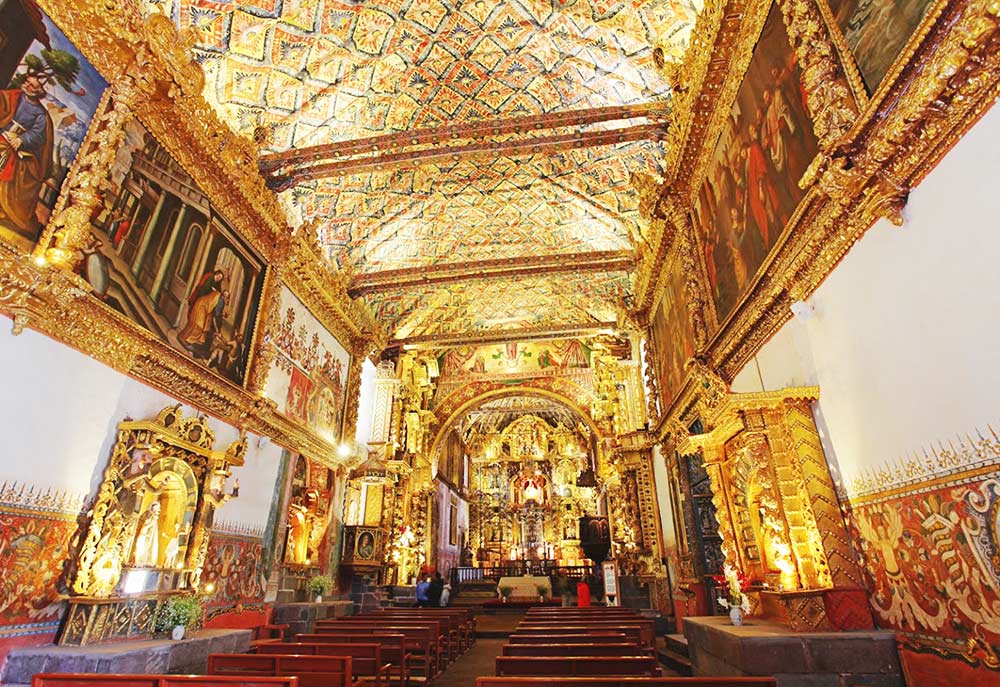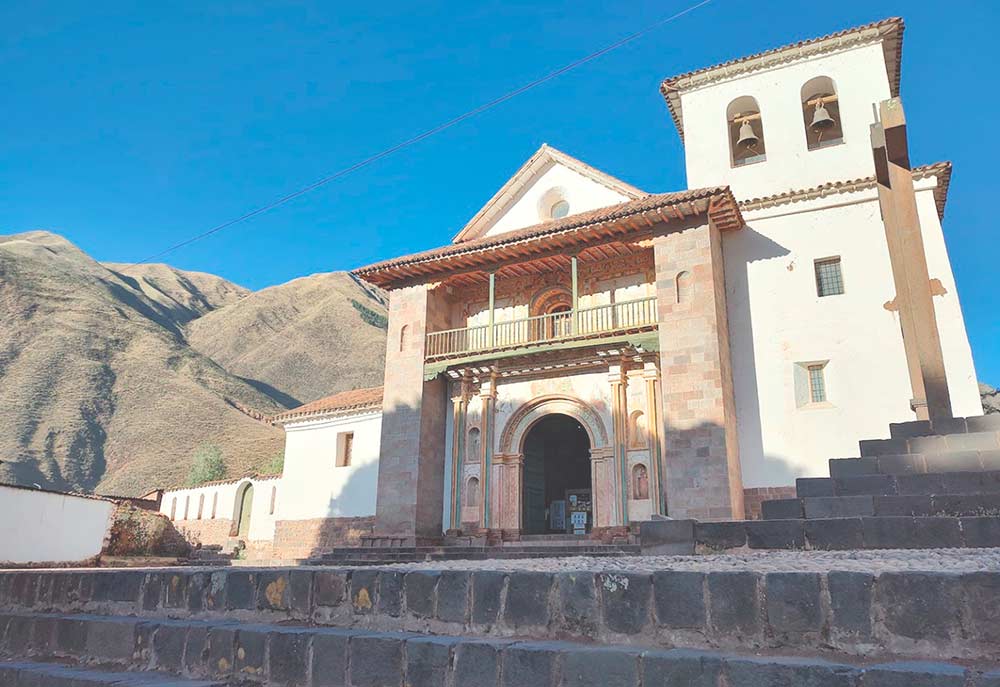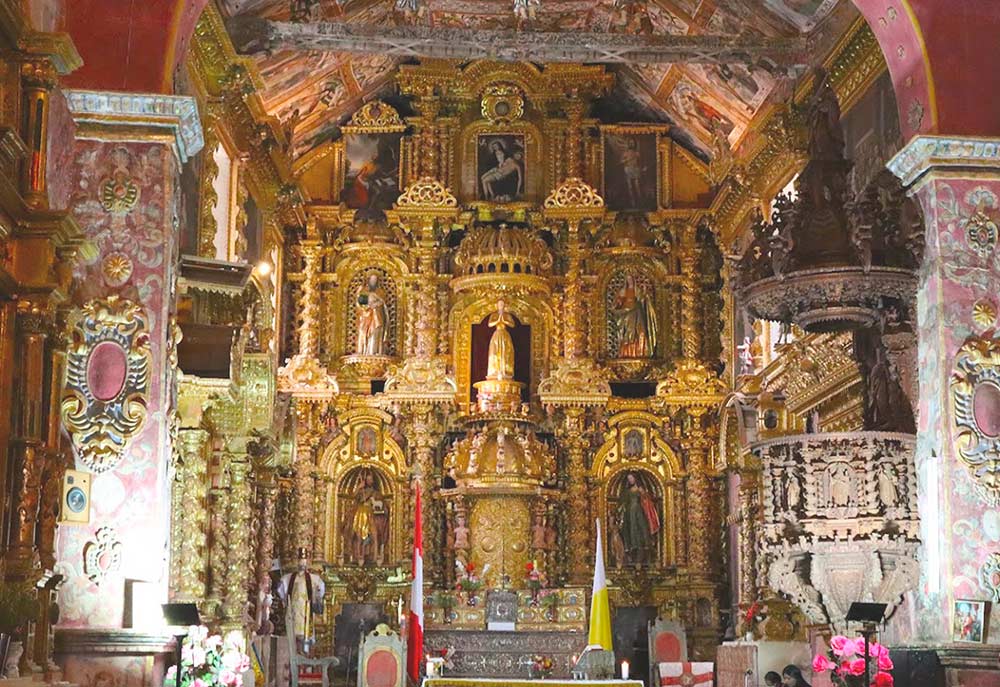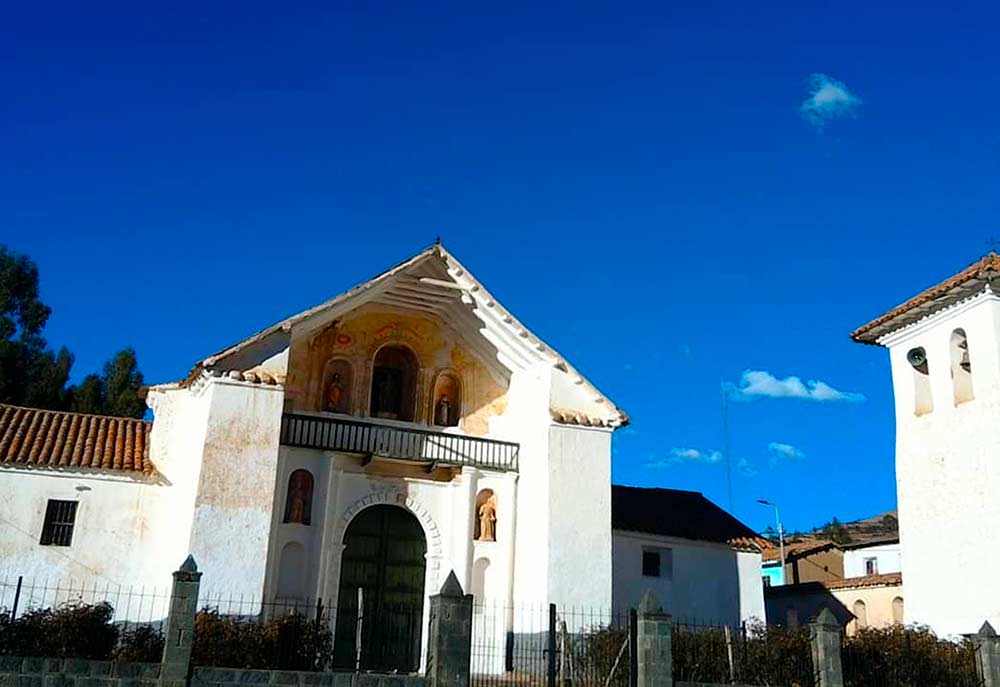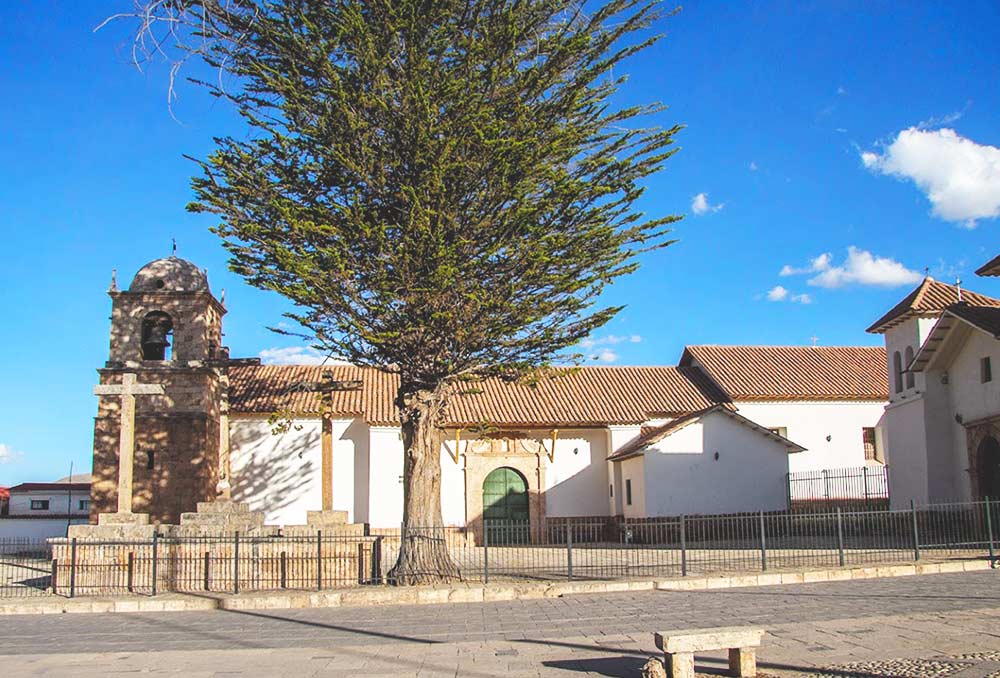More colonial temples in the South Valley of Cusco
A route not well known by travelers is the one to the south of Cusco. This destination like as, like The Sacred Valley, has many archaeological sites, Inca constructions, and, consequently, colonial buildings. Cusco has many Christian temples in the city, but in the evangelical expansion, it reached different places, which are, now provinces and districts of the Cusco region. Let’s get to know some of the most beautiful colonial temples in the southern valley.
Content
1. Church of Andahuaylillas
a) Location:
The church of San Pedro Apóstol de Andahuaylillas is located in the district that bears the same name. It belongs to the province of Quispicanchi not far from the City of Cusco. Approximately 40 kilometers. It has an altitude of 3,122 meters above sea level. This district has a population of around 5,000 inhabitants. It has a cobbled square and is quite peaceful. In this square, the church is considered one of the most beautiful in Cusco.
b) History:
It is estimated that its construction was at the end of the 16th century. This is by the dated signature of one of the canvases. The artist Luis de Riaño, made one of his works dated 1626. The paintings found were a request from the then parish priest Juan Pérez Bocanegra. This temple was built in dedication to San Pedro, however, on the main altar you can find the Virgen del Rosario. For some years he was under the order of the Jesuits.
c) Architecture:
Although the structure and facade of this church look basic, the interior is completely exquisite. It has many canvases and other decorations that we will detail later. The façade has a balcony, and below it is the main portal that has decorative stone details, and there are four columns decorated exceptionally. It also has a bell tower with a very solid quadrangular base. Three crosses can also be found in the main atrium of the temple. These crosses have a particular beauty because they do not clash with the environment or with the temple. It is believed that it was built on top of an important Inca temple, due to the traces of some Inca-style walls. However, there are still no concrete studies of this information.
d) Attractions:
The interior of the temple has a well-achieved decoration. The amount of gold leaf decorations cover almost all the spaces of the temple, especially where the main altar and the frames of the canvases are located. The art that can be seen is one of the best samples of the Andean baroque. A style that sought to impose itself on the viewer due to its glamorous finishes and the impressive ornamentation of each detail.
The ceiling is fully recovered with naturalistic, floral, and fruit motifs. The interior walls of the temple have different canvases that combine perfectly with the rest of the decorations thanks to their well-achieved frames bathed in gold leaf. Most of the paintings are by Juan de Riaño, a disciple of Angelino Medoro. Other works that can be found are those of Diego Quispe Tito and others belonging to the Cusco school anonymously. The most striking thing about this temple is that it has an arch towards one of the enclosures with the phrase: “I baptize you in the name of the Father and of the Son and the Holy Spirit”, in three languages: Puquina, Quechua, and Aymara.
The church of Andahuaylillas is part of the “Andean Baroque Route” together with the churches of Huaro and Canincunca. Near the district of Andahuaylillas are the Archaeological Parks of Tipón and Pikillaqta. In case you decide to make this trip. The most recommended thing is that you end your tour in this place. The temples of other districts on some occasions only serve during the morning.
2. Temple of Quiquijana
a) Location
The San Pedro Apóstol de Quiquijana temple is located in the Quiquijana district that belongs to the Quispicanchi province. Quiquijana is at an altitude of 3553 meters above sea level, at an approximate distance of 70 kilometers from the city of Cusco or an hour and thirty minutes away by bus or car; towards Cusco – Sicuani. It has a population of more than 9,500 inhabitants according to the INEI in 2018. The temple has an area of almost 3,000 square meters. A few years ago it was fully restored.
b) History:
According to some data, it can be estimated that the construction of this temple was during the colonial era. On the cornice of the temple door, the date of its elaboration could be found, this being the year 1630. Currently, that cornice is painted white. In addition, another important piece of information is the first baptism carried out, it has a record of the year 1653. Date in which it has probably already had some years of operation.
c) Architecture:
This temple is quite similar in construction and shape to the temples that can be found in these areas. Although it has adobe walls, the foundations and the base of the construction are made of stone. The temple is made up of a single nave and a higher presbytery. The high walls are reinforced by buttresses. It has a tower in the form of a bell tower that is attached to the temple and is also made entirely of adobe.
d) Attractions:
The temple has two entrances, the main one has a Romanesque doorway and superb brick treatment, which serves as decoration. While the second access has a portal also decorated in brick, but not with the same mastery as the first, this access leads directly to the side towards the gospel. Finally, regarding the roof of the temple, it has a protection made up of ceramic tile that also enhances its beauty.
The inside of the temple has many canvases from the Cusco school, each with its respective gold leaf frames. Like the main altar and a large part of the choir, it has gold leaf decorations. These decorations belong to the Andean Baroque style. It has three wooden altarpieces bathed in gold leaf as well as six plaster masonry altarpieces. You can find 23 sculptures, between gold and polychrome of different sizes. Finally, you can find large murals.
3. Temple of Checacupe
a) Location
The temple or Immaculate Conception Parish of Checacupe is located in the province of Canchis of the Cusco region. Located at an altitude of 3441 meters above sea level. It is in the South Valley, almost 100 kilometers away, so the trip by bus or car is two hours and ten minutes. It has a population of approximately 5,000 inhabitants. The temple is located in the same Plaza de Armas de Checacupe.
b) historia:
The temple was built on the foundations of an Inca Tambo during the 16th century, there is not much information regarding its foundation and activities related to the construction of this temple. The building consists of adobe walls, while the base and foundations are made of stone. The temple consists of a single nave, together with a bell tower.
This temple is considered one of the most beautiful in all of Cusco. Of course, the beauty of its details can be seen inside. However, the facade of the temple is important for the sublime details that adorn it. It has two entrances, the main one has a semicircular arch with rectangular columns and two niches on each side; the side door has a semicircular arch with two simple columns. The roof of the structure is covered with ceramic tile.
An important piece of information is the following: the construction of the Pitumarca temple or Archangel Saint Michael Temple, was order along with 36 other churches, including this one, in the Cusco region. Commissioned by Bishop Mollinedo y Ángulo, also known as the Great Patron of the Arts (1626 – 1699).
c) Attractions:
Inside the Temple of the Immaculate Conception of Checacupe, you can find different ornamental elements. The main altar is a Churrigueresque made of fine wood bathed in gold leaf, it has the particularity of having three bodies and three aisles. These intersections are adorned with Solomonic columns with the image of the Immaculate Virgin in the center. This altar has a tabernacle composed of carved silver.
The area of the communion rail has sculptures of the twelve apostles of Jesus, carved and polychrome. They are located in arcs, separated from each other. The pulpit is walnut in color, where the Immaculate Virgin is located, accompanied by four religions from the Catholic Church. PFor its part, the baptistery has a white stone fountain with a mural on the Baptism of Jesus in the Jordan River. In the high choir, you can see different murals of Santa Victoria, Inés, and Cecilia. All these decorations and canvases belong to the artistic expression of the Andean Baroque.
Callpa simi Diospa bautismunpac churascanri caymi – Amen Jesús.
In Latin: “Ego te bautizo in nomine Patris et Fili et Spiritus Sancti”
In Quechua: Quichua simipi chai cusca callpayocllatacmi “Nocam canta Bautizaiqui Yayap Churip Spiritu Sanctop sutimpi”
In Aymara: Aymara simipi cai cusca callpayocllatac Amen Jesús: “Nahuma bautizasma Tata Nayo Canpsa Spirito Santon pasasutipan Amen Jesús”
4. Temple of Pitumarca
a) Location:
The Archangel San Miguel de Pitumarca temple was recognized as the Cultural Heritage of the Nation in 2016 with resolution No. 080-2016. Pitumarca, in recent years, is constantly visited for hosting one of the most beautiful natural landscapes on the planet, referred to as the Vinicunca mountain. Currently, this district of the province of Canchis has a population of 7000 inhabitants. To get there from Cusco it follows a way of the distance of 107 kilometers or a trip of 2 hours and 30 minutes. The temple is located in the Plaza de Armas of the district.
b) History:
The temple was built at the end of the 17th century, ,it shows the characteristics of Spanish-style constructions. It also contains murals, canvases, and some decorations from the Andean baroque. It has a rectangular shape with 6 chapels arranged inside, that is, attached to the central nave. Another component is the bell tower surrounded by a patio through which it is connected to the temple. The shock wave of the sound of the bell is highlighted, which can be heard 7 kilometers away. As for its structure, it has stone foundations and adobe walls, as well as an Andean or ceramic tile roof. The lining of the structure is made of clay and painted with lime.
c) Attractions:
It has baroque art but with some significant variations in the base, the main access façade, in some finishes, and architectural elements. For example, the entrance has a semicircular arch and two attached columns plus two niches on each side. In addition, there is an open niche, like a balcony, which is used to preach or evangelize with people outdoors.
As for its interior, it has different canvases in the Andean Baroque style. It is estimated a quantity of 42 canvases with their respective frames carved and bathed in gold leaf. The walls and the ceiling have decorations of painted flowers, along with other figures that decorate the entire interior. It has a high altar made of carved wood that is bathed in gold leaf. The different chapels house some saints. Finally, you can see sculptures of saints, some religious virgins, and the central figure of the archangel Saint Michael.
5. Temple of Saint Bartolomé of Tinta
a) Location
The San Bartolomé Temple is located in the district of Tinta. This district is located southeast of the city of Cusco, about 113 kilometers away, that is, a two-hour and forty-minute drive by bus or car. It has an altitude of 3466 meters above sea level. It has a population of just over 5,000 inhabitants. The temple is located on the south side of the Plaza de Armas de Tinta.
b) History:
San Bartolomé de Tinta Temple, according to some files found in the records of the Catholic Church,it is estimated that the construction process dates between the years 1572 – 1590. Initiating this process with the main intention of achieving a faster expansion of the evangelizations planned by the Spanish crown for their new lands. The need to show a more imposing enclosure was managed by the friar of that time, Antonio Valdez Ugarte. Who ordered several improvements, and is also credited with the construction of the chapel that now houses the Virgen de las Nieves. This chapel borders the main temple.
c) Architecture:
It has the shape of a Latin cross with a more Renaissance than Baroque structure, although this changes inside the temple. The body consists of a single nave with chapels attached to the sides. Its structure has a stone foundation and adobe walls. While the roof is protected by Andean or ceramic tiles.
As for the façade, the bell tower with a quadrangular base of three horizontal bodies composed of travertine stone masonry stands out. The bells that it houses date from 1786 and 1796. In front of one of the entrances to the temple, on the esplanade, you can see on a stone receptacle, three large crosses that adorn a large part of this entire enclosure and above all embellish the district square.
The San Bartolomé temple has two entrances. Formerly the entrance was used through the stone portal. This entrance gave a direct view of the main altar. However, today the side portal is used. Both doors are made of wood with metal details.
d) Attractions:
The interior of the temple has 25 canvases with their respective frames carved from wood and bathed in gold leaf. All of them are large, and narrate the life of Jesus and Mary. Other paintings narrate the martyred life of some saints. The side chapels that adjoin the nave are related to The Sacred Heart of Jesus and the Holy Sepulchre. You can also see the wall painting.
It presents a Triumphal Arch that links the presbytery with the body or the nave of the temple. This arch is made in quincha, supported by two pilasters of stonework and tile, and is covered by mural painting.
The main altar has a wooden altarpiece. The baptistery has a rectangular plan, and for its entrance, it presents a semicircular arch in adobe. As for the choir, it is reached by a U-shaped staircase, in this environment, you can find an organ, although in its state it can no longer be used, except, perhaps, the presence of a specialist who can recover such a valuable piece. Most of the floor, inside the temple, is tongue and groove wood that gives an elegant detail to the entire facility.
Table of distances from Cusco to the churches
| Route | Distance | Approximate travel time |
| Cusco – Andahuaylillas | 40 kilometers | 1 hour |
| Cusco – Quiquijana | 70 kilometers | 1 hours and 50 minutes |
| Cusco – Checacupe | 100 kilometers | 2 hours and 10 minutes |
| Cusco – Pitumarca | 107 kilometers | 2 hours and 25 minutes |
| Cusco – Tinta | 113 kilometers | 2 hours and 40 minutes |
By Imachupicchu – Last updated, August 22, 2024
